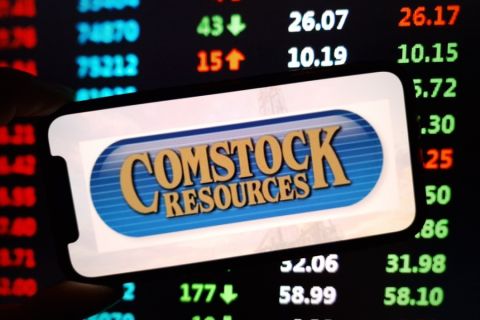
Don’t say “’sup?” in your company’s break room.
Really, your younger colleagues will suspend your swagger license, like, for days.
This isn’t just about vernacular (look it up, kiddos) but attention to trends. Just as you wouldn’t use “tubular” as a positive adjective a la “groovy,” it’s not a good idea to fully embrace the recent upward jolt in ethane prices.
In the span of a week, ethane at Mont Belvieu, Texas, shot up 54% to a little over 27 cents per gallon (gal). At Conway, Kan., the jump was 49% to 25 cents/gal. Combine these hikes with the 27-month highs at both hubs for the hypothetical NGL barrel and a little giddiness is understandable.
It won’t last.
 It will take sustainable demand to maintain ethane prices at levels substantially above the 20 cents/gal mark where they have lingered for many months. Kendall Puig, of Colorado-based East Daley Capital Advisors Inc., believes it will be first-quarter 2018—fourth-quarter 2017 at the earliest—when the next three big crackers come online.
It will take sustainable demand to maintain ethane prices at levels substantially above the 20 cents/gal mark where they have lingered for many months. Kendall Puig, of Colorado-based East Daley Capital Advisors Inc., believes it will be first-quarter 2018—fourth-quarter 2017 at the earliest—when the next three big crackers come online.
But Puig, a contributor to East Daley’s new “Dirty Little Secrets” report, has concerns that U.S. construction of export terminals is outracing overseas demand for LPG.
“If you look at the past few years, every time that a midstream company has brought on another terminal expansion, it’s filled right away,” she said. “Going into 2016, we finally saw global demand take a step back for a couple months, particularly in the Asian market. We saw terminal utilization drop quarter-over-quarter for the first time.”
Then in fourth-quarter 2016, Phillips 66 (NYSE: PSX) added some 150,000 barrels per day of capacity. Propane exports looked strong in December and January, Puig said, but risk is increasing for the rest of the year.
“If you look at petrochemical demand growth, which has fueled a lot of this so far, it’s tapering off,” she said.
As the industry has tended to do in the past, it has overbuilt, East Daley believes.
 “There will be some times when these terminals are full, but there will be some times when they are not full and there will be some risk there,” she said.
“There will be some times when these terminals are full, but there will be some times when they are not full and there will be some risk there,” she said.
For the week, prices of all NGL rose except for Conway isobutane, which slid after nearly averaging $1.30/gal last week. Isobutane peaked at $1.37/gal at both hubs on Feb. 2 before settling down.
Pentanes-plus rose to within 1 cent of $1.20/gal at both hubs, its highest level in almost seven months. Stratas Advisors noted last week that forward progress signaled by the U.S. and Canadian governments on TransCanada Corp.’s (NYSE: TRP) Keystone XL, Enbridge Inc.’s (NYSE: ENB) Line 3 and Kinder Morgan Inc.’s (NYSE: KMI) Trans Mountain pipelines could double demand for U.S.-produced condensate, which is used as a diluent for heavy crudes.
 Storage of natural gas in the Lower 48 declined by 152 billion cubic feet (Bcf) in the week ended Feb. 3, the U.S. Energy Information Administration reported. The decrease, slightly below the Bloomberg consensus of 154 Bcf, resulted in a total of 2.559 Tcf. The figure is 11.3% less than the 2.884 Tcf figure at the same time in 2016, and 1.8% below the five-year average of 2.514 Tcf.
Storage of natural gas in the Lower 48 declined by 152 billion cubic feet (Bcf) in the week ended Feb. 3, the U.S. Energy Information Administration reported. The decrease, slightly below the Bloomberg consensus of 154 Bcf, resulted in a total of 2.559 Tcf. The figure is 11.3% less than the 2.884 Tcf figure at the same time in 2016, and 1.8% below the five-year average of 2.514 Tcf.
Joseph Markman can be reached at jmarkman@hartenergy.com and @JHMarkman.
Recommended Reading
Utica Oil E&P Infinity Natural Resources’ IPO Gains 7 More Bankers
2024-11-27 - Infinity Natural Resources’ IPO is expected to provide a first-look at the public market’s valuation of the Utica oil play.
Analyst: Is Jerry Jones Making a Run to Take Comstock Private?
2024-09-20 - After buying more than 13.4 million Comstock shares in August, analysts wonder if Dallas Cowboys owner Jerry Jones might split the tackles and run downhill toward a go-private buyout of the Haynesville Shale gas producer.
BP Profit Falls On Weak Oil Prices, May Slow Share Buybacks
2024-10-30 - Despite a drop in profit due to weak oil prices, BP reported strong results from its U.S. shale segment and new momentum in the Gulf of Mexico.
Utica Oil E&P Infinity Natural Resources Latest to File for IPO
2024-10-05 - Utica Shale E&P Infinity Natural Resources has not yet set a price or disclosed the number of shares it intends to offer.
Sheffield: E&Ps’ Capital Starvation Not All Bad, But M&A Needs Work
2024-10-04 - Bryan Sheffield, managing partner of Formentera Partners and founder of Parsley Energy, discussed E&P capital, M&A barriers and how longer laterals could spur a “growth mode” at Hart Energy’s Energy Capital Conference.
Comments
Add new comment
This conversation is moderated according to Hart Energy community rules. Please read the rules before joining the discussion. If you’re experiencing any technical problems, please contact our customer care team.






